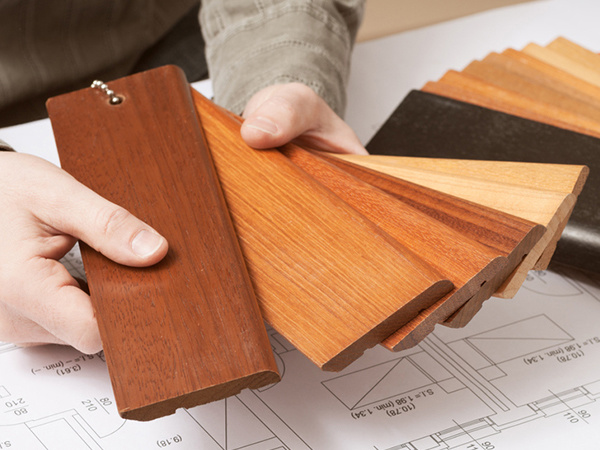
Co-extruded flooring: multifunctional floor material enabled by technology
Release time:
2025-07-15
Co-extrusion flooring, as a floor material made by co-extrusion of multiple materials, has found a precise balance between floor decoration and practical needs with its unique advantage of "layered functional design".
Co-extrusion flooring, as a floor material made by co-extrusion of multiple materials, has found a precise balance between floor decoration and practical needs with its unique advantage of "layered functional design". It combines materials with different properties into one through one-time co-extrusion technology, which not only retains the characteristic advantages of a single material, but also achieves a functional upgrade of 1+1>2 through inter-layer synergy, becoming a diversified choice from indoor home to outdoor projects.
1. Core process and structural characteristics of co-extrusion flooring
The core competitiveness of co-extrusion flooring comes from its "multi-layer co-extrusion" manufacturing process, which allows each layer of the floor to assume specific functions and form a "material matrix" with precise division of labor.
1. Co-extrusion process: one-time layered composite technology
The co-extrusion process is to use multiple extruders to simultaneously deliver two or more polymer materials with different properties (such as PVC, PE, PP, etc.) to the same mold, achieve inter-layer fusion in a molten state, and finally form an integral board with a multi-layer structure. Its key features are:
Tight interlayer bonding: Molecular-level fusion of materials in a molten state avoids the delamination and peeling problems that are prone to occur in traditional adhesive lamination, and the interlayer peeling strength can reach more than 15N/10mm (far exceeding the 5N/10mm of ordinary adhesive lamination);
Precise performance control: The composition and thickness of each layer of material can be designed according to demand, for example, the thickness of the wear-resistant layer can be controlled at 0.3-1mm (accounting for 10%-20% of the total thickness of the board), which not only ensures sufficient wear resistance but also avoids material waste;
Continuous production: From raw material input to finished product cutting, the production efficiency is 2-3 times that of traditional lamination process, which is suitable for large-scale standardized production.
2. Typical structural stratification and functional division of labor
The multi-layer structure of co-extruded flooring is like "functional superposition", and each layer of material has its own function:
Surface layer (functional layer): "protective layer" that directly contacts the outside world, mostly made of wear-resistant, anti-aging, and easy-to-clean materials (such as PVC alloy, modified PE, etc.), and can improve anti-slip performance by adding anti-slip particles or embossing technology, with a dry friction coefficient of ≥0.6;
Core layer (structural layer): "skeleton layer" that determines the overall strength of the floor, commonly used polymer matrix mixed with reinforced fillers (such as calcium carbonate, wood powder, glass fiber, etc.), which not only ensures impact resistance (falling ball impact test ≥10kg・cm), but also reduces costs;
Bottom layer (stabilization layer): "balancing layer" that balances the stress of the board, mostly using materials similar to the core layer but with adjusted proportions, to reduce warping and deformation caused by temperature changes, and ensure the dimensional stability of the floor in an environment of -30℃ to 60℃ (shrinkage rate ≤0.5%).
2. Performance advantages and scene adaptation of co-extruded floor
The multi-layer structure design of co-extruded floor enables it to achieve "strengthening its strengths and avoiding its weaknesses" in terms of performance, and can accurately match the core needs of different scenes.
1. Core performance: Comprehensive advantages brought by multi-layer synergy
Outstanding wear resistance and scratch resistance: The surface layer adopts high-hardness material (Shore hardness ≥ 85D), with reasonable thickness design, the wear resistance can reach more than 10,000 revolutions (far exceeding the 5,000 revolutions of ordinary single-layer floor), suitable for high-frequency traffic areas such as shopping malls and schools;
Strong weather resistance and stability: By adding anti-UV additives (such as titanium dioxide and hindered amine light stabilizers) to the surface layer, the color fastness of the co-extruded floor under outdoor exposure can reach more than level 6 (ordinary floor is level 3-4), and it is not easy to become brittle at low temperatures and not easy to soften at high temperatures, which is suitable for outdoor scenes with changeable climates;
Easy to clean and good hygiene: The smooth and dense structure of the surface reduces the possibility of stain penetration. Daily cleaning only needs to be wiped with clean water or neutral detergent, especially in places with high hygiene requirements such as hospitals and food processing areas, which can reduce the risk of bacterial growth;
Balanced foot feel and safety: The core layer can be made of foaming technology (such as PVC Micro foaming) forms a buffer structure, which makes the floor have a certain elasticity (elastic modulus 100-200MPa), making it comfortable to walk on, while the overall rigidity can meet the needs of wheelchairs, carts, etc.
2. Main scenarios and application features
Indoor public spaces: shopping mall corridors, hospital wards, school classrooms and other areas, choose PVC co-extruded flooring (surface wear-resistant PVC + core foamed PVC), which is not only wear-resistant and scratch-resistant, but also reduces walking noise due to the foamed core layer (impact sound insulation ≥ 60dB), and has rich colors and can be customized to match different decoration styles;
Outdoor leisure areas: scenic plank roads, swimming pool perimeters, terrace platforms, etc., mostly use PE co-extruded flooring (surface UV resistant PE + core reinforced PE), which is resistant to rainwater soaking and not easy to slip (wet friction coefficient ≥ 0.5), does not change color under long-term exposure, and has a service life of more than 15 years;
Industrial auxiliary areas: workshop aisles, warehouse perimeters, equipment maintenance platforms, etc., choose high-strength co-extruded flooring (surface PVC alloy + core glass fiber reinforced PE), strong impact resistance (can withstand 5kg hammer 1 1.5 meters high and no cracks), and resistant to oil and chemical corrosion, suitable for industrial lightly polluted environments;
Special functional areas: laboratories, clean rooms and other places that require chemical resistance, use PVDF co-extruded flooring (surface polyvinylidene fluoride), which can withstand acid and alkali solutions (stable within the pH range of 2-12), and does not generate static electricity on the surface to avoid dust adsorption.
3. Installation and maintenance of co-extruded flooring: balance between convenience and durability
The structural characteristics of co-extruded flooring make it more advantageous in installation and maintenance, and can reduce long-term use costs.
1. Installation method: Modular design is suitable for various scenarios
Lock-type installation: Most co-extruded floors are designed with tongue-and-groove locks on the edges. No glue is required during installation. They are formed into a whole through "mortise and tenon joints". One person can operate it. The laying efficiency can reach more than 50㎡/day. It is suitable for indoor and outdoor flat ground (such as cement base, wooden base);
Snap-on fixing: In large outdoor projects, in order to cope with the expansion and contraction caused by temperature changes, the floor can be fixed to the keel with snaps, and 5-10mm expansion joints are reserved to avoid arching or cracking caused by thermal expansion and contraction;
Direct laying: For temporary venues or light-load scenarios (such as exhibitions and temporary passages), the co-extruded floor can be directly laid on the flat ground, using its own weight to maintain stability, without complex fixing, and can be reused after removal.
2. Maintenance strategy: Targeted protection to extend service life
Daily cleaning: Indoor floors can be cleaned weekly with a vacuum cleaner or mop. Oil stains can be wiped with a neutral detergent; outdoor floors are exposed to the natural environment and need to be washed with a high-pressure water gun once a month to remove dust and moss attached to the surface (the low surface energy of the co-extruded surface makes it difficult for dirt to adhere);
Damage repair: If there are slight scratches on the surface, a special repair agent can be applied to fill them; in the case of severe local damage, the damaged plate can be replaced separately due to the lock design, without the need for overall renovation, reducing maintenance costs;
Special protection: In areas where heavy equipment frequently passes, rubber pads can be laid on the surface of the co-extruded floor to reduce direct friction; when used outdoors, avoid long-term heavy pressure from sharp objects (such as shovels and steel chisels) to prevent local deformation.
IV. Innovation Trend of Co-extruded Flooring: Extension from Function to Value
With the advancement of material technology, co-extruded flooring is developing towards "multifunctional integration" and "green environmental protection":
Intelligent functional composite: Add conductive particles to the surface or core layer to make anti-static co-extruded flooring for electronic workshops; or composite antibacterial materials (such as silver ion antibacterial agents) to make the floor have continuous antibacterial ability (antibacterial rate ≥ 99%), suitable for hospitals, maternal and child rooms and other places;
Recycling and recycling: Use recyclable polymer materials (such as recycled PVC, PE) as core layer raw materials, combined with degradable surface layers to reduce the burden on the environment. Some brands have achieved a closed loop of "production-use-recycling";
Personalized customization: By adjusting the color matching and surface texture of co-extruded materials, it can simulate a variety of textures such as stone, wood, and metal, and even achieve "gradient colors on the same floor" to meet the customized needs of high-end places.
The value of co-extruded flooring lies in that it breaks the "single material performance limitations" through process innovation and uses the wisdom of "layered design" to achieve precise matching of functions. From the warm floors of homes to the durable outdoor pavements, this material that combines technology with practicality is becoming a new choice of "efficiency, durability, and diversity" in floor systems.
Related news
If you have any suggestions for our company or demand for our products, please be sure to contact us, thank you very much for your support and attention to us all the time!
For any questions you may have about composite wood products, we can provide you with professional advice and solutions.
Add : Environmental Protection Industrial Park, Xianghe County, Langfang City, Hebei Province
GET A FREE QUOTE
Leave your contact information and we will contact you during working hours.
Copyright : Xinxuan New Materials Co., Ltd. Powerby : CEGLOBAL SEO BUSINESS LICENSE PRIVACY POLICY




